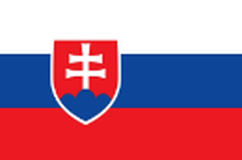- The official name of Slovakia is Slovenská republika, translated as the Slovak Republic.
- Etymology. The name Slovak came from a shortening of Proto-Slavic *slověninъ (“Slav”) + -ák. It came from old Slavic word "slovo" meaning "the word" and also "a man." Sloven (or Slovan) was literally a man, whose words you could understand. In contrast, the man, that couldn't be understood was called "Nemec" - the mute one. And this is still the word for Germans in (I believe) all Slavic languages.
- The difference between Slavs, Slavonia Slovakia, Slovenia. Slovakia is the country officially known as the Slovak Republic. Slovenia is a nation-state that was part of the former Yugoslavia. They are both Slavic nations, and this is what the name implies. But Slovaks are part of West Slavic group (that includes Czechs, Poles and Luzatian Serbs, among others), while Slovenes belong into South Slavic group (with all the nations from former Yugoslavia and Bulgarians). Slavonia is not a nation-state but a province of modern day Croatia, also part of the former Yugoslavia. Slovenia and Slavonia, unlike Slovakia, are part of the Balkans and have experienced violence and atrocities related to the recent wars in this region. What they share in common is a Slavic heritage that has also brought similarities in spelling as these various names attest.
- Why did Slovakia secede from Czechoslovakia? The leaders of Slovakia felt that the Czech and Slovak Federation did not provide for adequate autonomy and wasn't the best way for the Slovak people to develop culturally and economically. The secession of Slovakia from the Czech and Slovak Federation was peaceful, and so it is referred to as the "Velvet Divorce.
- History. Ancient tools have been found at Nové Mesto nad Váhom that have been dated from 270,000 BC, in the Early Paleolithic era. Until 1993 the Slovaks have always been the subjects of stronger peoples, such as the Nazis, Czechs, Magyars, and the Habsburg Empire. However, as a people, they have a history of more than 1500 years.
- Fungi. Over 4000 species of fungi have been recorded from Slovakia
- The High Tatras are a mountain range along the border of northern Slovakia in the Prešov Region, and southern Poland. There are peaks, glacial valleys, mountain lakes, alpine villages, tourist centers, and historical sites. This National Park has beautiful hiking, many day trips.
- Gabcikovo Dam. This project was started in 1977 under a treaty between Hungary and the former Czechoslovakia. The goal was hydro-electric energy. In 1989, Hungary suspended work on their portion of the project citing ecological concerns. Iin 1993 the International Court of Justice, a United Nations organ, was called in to arbitrate.
- Folk arts. Wood carving, ceramics, fabric weaving, and glass painting, have a long and popular tradition in Slovakia. Examples of folk architecture, such as wooden churches and brightly painted houses, are found throughout the country, particularly in the Ukrainian communities of Eastern Slovakia.
- Fujara. This overtone bass flute is a unique instrument of Slovakia. It is a five foot long wooden flute that plays a thunderous drone. It was traditionally played by Slovakian shepherds.
- Romany. 2-7.5% of the population of Slovakia is Romany (Gypsy). They live mostly in the eastern part of the country. Also the Slovaks have the highest percentage of Gypsy genes of all non-Gypsy populations in Europe. As much as 2.5% of Eastern Slovak male lineages belong to the distinctive Romani haplogroup H1a (as opposed to under 1% of the Romanians).
- Andy Warhol. The most famous American of Slovak descent is probably pop artist Andy Warhol (1928-1987), whose parents immigrated from Miková in north-eastern Slovakia.
- Sports. Ice hockey, skiing, football, volleyball, tennis are popular sports in Slovakia.
- Food. Slovak cuisine varies from region to region. Generally they say it is "Bryndzove halusky" (a little bit of everything), Common ingredients include wheat flour, cow and sheep cheese, vegetables (potatoes, beans, corn, lentils, cabbage, onions and garlic), fruit (apple, pear, peach, apricot, cherry, plum, grape, orange, kiwi, grapefruit, banana), meat (pork, beef, chicken, fish). Rice is imported and widely used in the modern kitchen. Bread is very important and most people eat it for the breakfast and dinner. The bread differs from region to region. Some traditional dishes include bryndzove halusky (potato and cheese dumpling), Treska (codfish salad).
FRUA is a service-marked acronym of Families for Russian and Ukrainian Adoption in use since 1994. It and the full organizational name,
Families for Russian and Ukrainian Adoption, are not to be used to describe any organization or service not related to FRUA, without permission.
Families for Russian and Ukrainian Adoption, are not to be used to describe any organization or service not related to FRUA, without permission.
© 2023 Families for Russian and Ukrainian Adoption Including Neighboring Countries






